-
 Bitcoin
Bitcoin $107,352.1067
0.28% -
 Ethereum
Ethereum $2,429.3531
-0.90% -
 Tether USDt
Tether USDt $1.0001
-0.02% -
 XRP
XRP $2.1894
4.62% -
 BNB
BNB $646.7968
0.36% -
 Solana
Solana $147.4290
4.03% -
 USDC
USDC $0.9998
-0.02% -
 TRON
TRON $0.2756
1.52% -
 Dogecoin
Dogecoin $0.1630
1.14% -
 Cardano
Cardano $0.5612
1.18% -
 Hyperliquid
Hyperliquid $37.0580
-0.05% -
 Bitcoin Cash
Bitcoin Cash $496.9410
-0.09% -
 Sui
Sui $2.7318
3.19% -
 Chainlink
Chainlink $13.1503
0.58% -
 UNUS SED LEO
UNUS SED LEO $9.0766
0.55% -
 Avalanche
Avalanche $17.7220
1.46% -
 Stellar
Stellar $0.2380
1.52% -
 Toncoin
Toncoin $2.8439
0.38% -
 Shiba Inu
Shiba Inu $0.0...01143
1.84% -
 Litecoin
Litecoin $85.8053
1.47% -
 Hedera
Hedera $0.1483
2.70% -
 Monero
Monero $314.3240
2.12% -
 Bitget Token
Bitget Token $4.6725
0.77% -
 Dai
Dai $1.0000
0.00% -
 Polkadot
Polkadot $3.3555
1.28% -
 Ethena USDe
Ethena USDe $1.0001
0.02% -
 Uniswap
Uniswap $7.0890
2.64% -
 Pi
Pi $0.5355
-3.40% -
 Pepe
Pepe $0.0...09393
1.06% -
 Aave
Aave $256.8136
-1.90%
Privacy Coin Jargon Guide: Terminology from Mixing to Zero-knowledge Proofs
Privacy coins like Monero and Zcash use mixing, ring signatures, and zero-knowledge proofs to enhance transaction privacy and user anonymity.
May 11, 2025 at 06:49 am
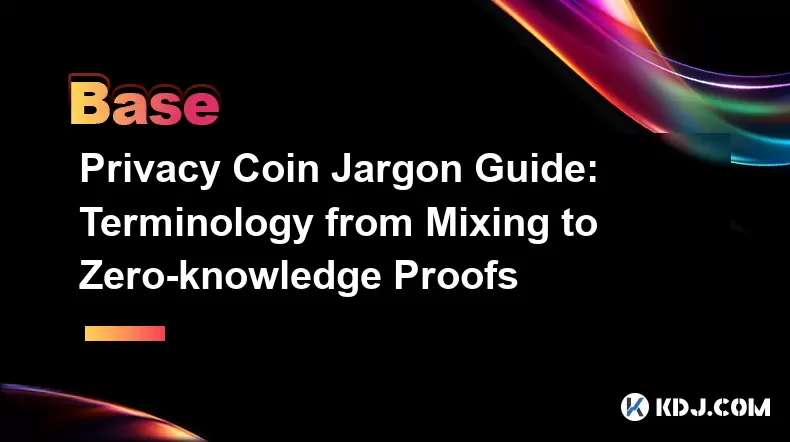
In the world of cryptocurrencies, privacy coins have emerged as a significant subset, designed to enhance user anonymity and transaction confidentiality. To navigate this specialized field, understanding the specific terminology used is essential. This guide aims to demystify the jargon surrounding privacy coins, from mixing to zero-knowledge proofs, providing a comprehensive overview of the key terms and concepts.
Mixing
Mixing, also known as coin mixing or tumblers, is a technique used to enhance the privacy of cryptocurrency transactions. The process involves combining multiple transactions from different users into a single transaction, making it difficult to trace the origin and destination of individual coins. This is particularly useful for privacy coins like Monero and Zcash.
- How Mixing Works: When users send their coins to a mixing service, the service pools these coins with those from other users. It then redistributes the coins to the intended recipients, ensuring that the output addresses do not directly correlate with the input addresses.
- Types of Mixing Services: There are centralized and decentralized mixing services. Centralized services are operated by a single entity, while decentralized services use smart contracts to facilitate mixing without a central authority.
- Benefits and Risks: Mixing can significantly enhance privacy, but it also comes with risks such as potential theft by centralized services or regulatory scrutiny.
Ring Signatures
Ring signatures are a cryptographic technique used by privacy coins like Monero to obscure the true signer of a transaction. This method involves grouping a user's signature with others, making it challenging to determine which signature belongs to the actual sender.
- How Ring Signatures Work: In a ring signature, the actual signer selects a group of other users' public keys. The signature is then generated in such a way that it could have been produced by any member of the group, thus providing plausible deniability.
- Advantages: Ring signatures provide a high level of anonymity and are resistant to quantum computing attacks, making them a robust privacy tool.
- Limitations: The effectiveness of ring signatures can be compromised if the group size is too small or if the same group is used repeatedly.
Confidential Transactions
Confidential transactions are a method used to hide the amount of cryptocurrency being transferred in a transaction. This technique is employed by privacy coins like Monero and Bitcoin's sidechain, Liquid.
- How Confidential Transactions Work: The actual amount is encrypted using a cryptographic commitment scheme, which allows the network to verify the transaction's validity without revealing the amount.
- Implementation: Confidential transactions use homomorphic commitments, which enable the addition and subtraction of encrypted values, ensuring that the total input equals the total output.
- Benefits: By concealing transaction amounts, confidential transactions enhance privacy and prevent third parties from analyzing spending patterns.
Stealth Addresses
Stealth addresses are one-time addresses generated for each transaction, ensuring that the recipient's actual address remains hidden. This technique is used by privacy coins like Monero and Zcash.
- How Stealth Addresses Work: When a sender wants to send coins to a recipient, they generate a new address for that specific transaction. The recipient can then use their private key to derive the one-time address and claim the funds.
- Advantages: Stealth addresses prevent the linking of multiple transactions to a single address, enhancing the recipient's privacy.
- Challenges: The use of stealth addresses can complicate wallet management, as users need to scan the blockchain to find transactions sent to their one-time addresses.
Zero-knowledge Proofs
Zero-knowledge proofs (ZKPs) are cryptographic protocols that allow one party to prove to another that a statement is true without revealing any information beyond the validity of the statement. Privacy coins like Zcash use ZKPs to enable private transactions.
- How Zero-knowledge Proofs Work: In a ZKP, the prover demonstrates knowledge of a secret without disclosing it. For example, in a Zcash transaction, the prover can prove that they have the necessary funds without revealing the amount or the sender's and recipient's addresses.
- Types of ZKPs: There are various types of zero-knowledge proofs, including zk-SNARKs (Zero-Knowledge Succinct Non-Interactive Arguments of Knowledge) and zk-STARKs (Zero-Knowledge Scalable Transparent Arguments of Knowledge).
- Applications: ZKPs are used not only for transaction privacy but also for other applications such as identity verification and secure voting systems.
Ring Confidential Transactions
Ring confidential transactions (RingCT) are an advanced privacy feature used by Monero, combining ring signatures and confidential transactions to enhance both sender and amount privacy.
- How RingCT Works: RingCT uses ring signatures to obscure the sender and confidential transactions to hide the amount. This dual approach ensures that neither the sender's identity nor the transaction amount is revealed.
- Implementation: Monero implemented RingCT in 2017, making it a standard feature for all transactions on the network.
- Benefits: RingCT provides a high level of privacy, making it difficult for third parties to analyze transaction patterns or trace the flow of funds.
Frequently Asked Questions
Q: How do privacy coins differ from regular cryptocurrencies like Bitcoin?
A: Privacy coins are designed with built-in features to enhance user anonymity and transaction confidentiality. Unlike Bitcoin, which has a transparent blockchain where all transactions are visible, privacy coins use techniques like mixing, ring signatures, and zero-knowledge proofs to obscure transaction details.
Q: Are privacy coins legal to use?
A: The legality of privacy coins varies by jurisdiction. Some countries have imposed restrictions or outright bans on privacy coins due to concerns about their potential use in illegal activities. It's important for users to check local regulations before using privacy coins.
Q: Can privacy coins be completely anonymous?
A: While privacy coins offer a high level of anonymity, achieving complete anonymity can be challenging. Factors such as metadata, IP addresses, and potential vulnerabilities in the underlying technology can still compromise privacy. Users must take additional measures, such as using VPNs and following best practices, to maximize their anonymity.
Q: How do I choose the right privacy coin for my needs?
A: Choosing the right privacy coin depends on your specific needs and priorities. Consider factors such as the level of privacy offered, the coin's adoption and liquidity, the technology used (e.g., ring signatures vs. zero-knowledge proofs), and the coin's regulatory status in your jurisdiction. Researching and comparing different privacy coins will help you make an informed decision.
Disclaimer:info@kdj.com
The information provided is not trading advice. kdj.com does not assume any responsibility for any investments made based on the information provided in this article. Cryptocurrencies are highly volatile and it is highly recommended that you invest with caution after thorough research!
If you believe that the content used on this website infringes your copyright, please contact us immediately (info@kdj.com) and we will delete it promptly.
- Ripple, CEO, and the XRP ETF Buzz: What's Next?
- 2025-06-29 00:30:13
- Ripple (XRP) and Crypto Analysis: Navigating Trends and Insights
- 2025-06-29 00:30:13
- Aave Price Bull Rally: Can AAVE Defend Its Critical Support Zone?
- 2025-06-29 00:50:12
- BlockDAG, Avalanche, Airdrop: Shaking Up the Crypto Scene with Innovative Strategies
- 2025-06-29 00:50:12
- Ethereum to $10,000? Crypto Analysts Weigh In on ETH's Ambitious ATH
- 2025-06-29 00:35:12
- Zilliqa 2.0: EVM Support and Protocol Overhaul Usher in a New Era
- 2025-06-29 01:10:13
Related knowledge
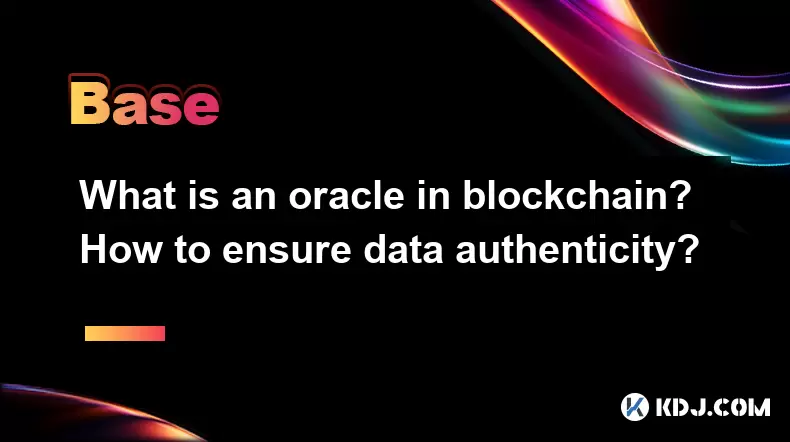
What is an oracle in blockchain? How to ensure data authenticity?
Jun 19,2025 at 08:49pm
Understanding the Role of an Oracle in BlockchainIn the context of blockchain technology, an oracle serves as a bridge between the blockchain and external data sources. While blockchains are inherently secure and decentralized, they cannot access real-world information on their own. Oracles enable smart contracts to interact with off-chain data such as ...
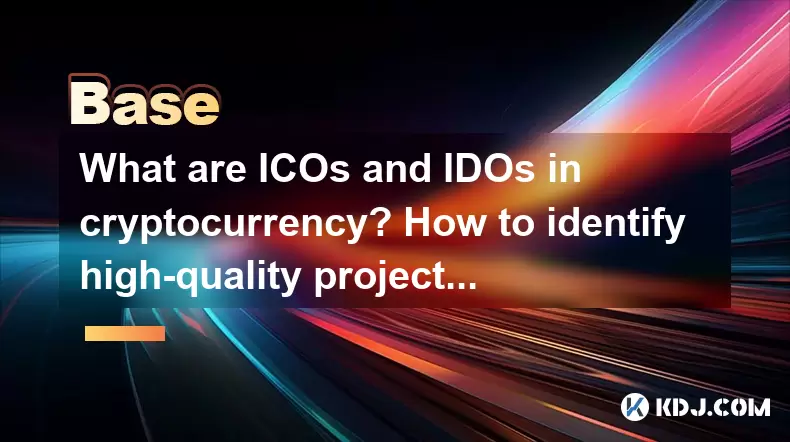
What are ICOs and IDOs in cryptocurrency? How to identify high-quality projects?
Jun 22,2025 at 11:49am
Understanding ICOs in CryptocurrencyInitial Coin Offerings (ICOs) are fundraising mechanisms used by cryptocurrency startups to raise capital for their projects. In an ICO, a company creates and sells its own tokens to investors in exchange for established cryptocurrencies like Bitcoin or Ethereum. The process typically involves the release of a whitepa...
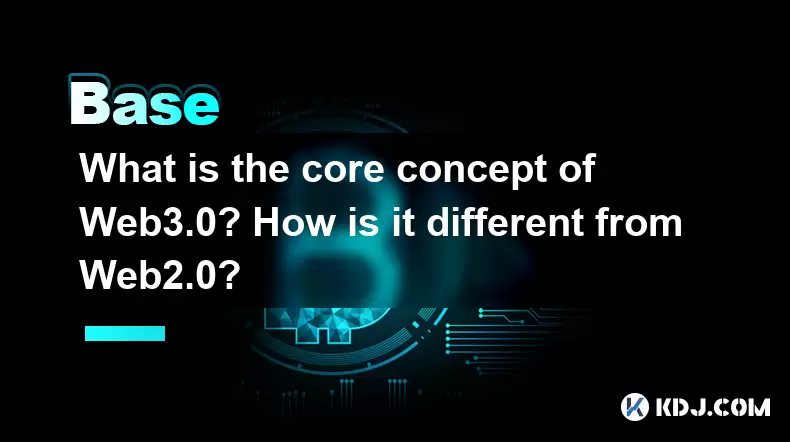
What is the core concept of Web3.0? How is it different from Web2.0?
Jun 21,2025 at 05:56pm
Decentralization as the Foundation of Web3.0The core concept of Web3.0 revolves around decentralization, which fundamentally challenges the centralized architecture of Web2.0. In Web3.0, control and ownership are distributed across a network rather than being held by a central authority or corporation. This is achieved primarily through blockchain techn...
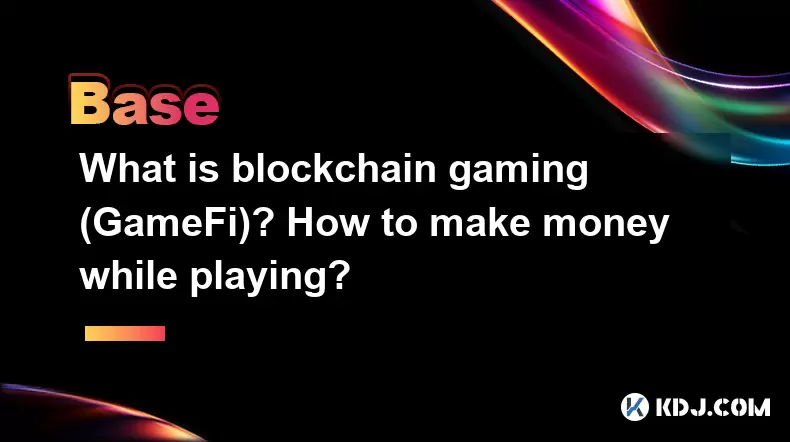
What is blockchain gaming (GameFi)? How to make money while playing?
Jun 20,2025 at 07:56am
Understanding Blockchain Gaming (GameFi)Blockchain gaming, often referred to as GameFi, is a fusion of blockchain technology and video games. It enables players to own in-game assets through non-fungible tokens (NFTs) and earn rewards via cryptocurrencies or token-based systems. Unlike traditional games where items are controlled by centralized develope...
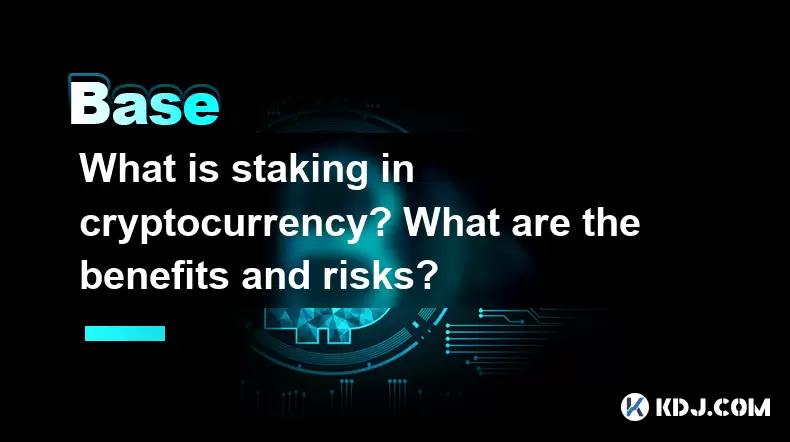
What is staking in cryptocurrency? What are the benefits and risks?
Jun 22,2025 at 10:01am
Understanding the Concept of Staking in CryptocurrencyStaking in cryptocurrency refers to the process of actively participating in transaction validation on a blockchain network that uses a Proof-of-Stake (PoS) consensus mechanism. Instead of miners competing to solve complex mathematical puzzles as in Proof-of-Work systems like Bitcoin, PoS blockchains...

How does the Lightning Network solve Bitcoin congestion? What is the usage process?
Jun 23,2025 at 06:21pm
Understanding Bitcoin Network CongestionBitcoin, as a decentralized digital currency, operates on a blockchain that records every transaction in a public ledger. Each block has a limited size, typically 1 megabyte, which allows for only a certain number of transactions per second (TPS). When the number of transactions increases, the network becomes cong...

What is an oracle in blockchain? How to ensure data authenticity?
Jun 19,2025 at 08:49pm
Understanding the Role of an Oracle in BlockchainIn the context of blockchain technology, an oracle serves as a bridge between the blockchain and external data sources. While blockchains are inherently secure and decentralized, they cannot access real-world information on their own. Oracles enable smart contracts to interact with off-chain data such as ...

What are ICOs and IDOs in cryptocurrency? How to identify high-quality projects?
Jun 22,2025 at 11:49am
Understanding ICOs in CryptocurrencyInitial Coin Offerings (ICOs) are fundraising mechanisms used by cryptocurrency startups to raise capital for their projects. In an ICO, a company creates and sells its own tokens to investors in exchange for established cryptocurrencies like Bitcoin or Ethereum. The process typically involves the release of a whitepa...

What is the core concept of Web3.0? How is it different from Web2.0?
Jun 21,2025 at 05:56pm
Decentralization as the Foundation of Web3.0The core concept of Web3.0 revolves around decentralization, which fundamentally challenges the centralized architecture of Web2.0. In Web3.0, control and ownership are distributed across a network rather than being held by a central authority or corporation. This is achieved primarily through blockchain techn...

What is blockchain gaming (GameFi)? How to make money while playing?
Jun 20,2025 at 07:56am
Understanding Blockchain Gaming (GameFi)Blockchain gaming, often referred to as GameFi, is a fusion of blockchain technology and video games. It enables players to own in-game assets through non-fungible tokens (NFTs) and earn rewards via cryptocurrencies or token-based systems. Unlike traditional games where items are controlled by centralized develope...

What is staking in cryptocurrency? What are the benefits and risks?
Jun 22,2025 at 10:01am
Understanding the Concept of Staking in CryptocurrencyStaking in cryptocurrency refers to the process of actively participating in transaction validation on a blockchain network that uses a Proof-of-Stake (PoS) consensus mechanism. Instead of miners competing to solve complex mathematical puzzles as in Proof-of-Work systems like Bitcoin, PoS blockchains...

How does the Lightning Network solve Bitcoin congestion? What is the usage process?
Jun 23,2025 at 06:21pm
Understanding Bitcoin Network CongestionBitcoin, as a decentralized digital currency, operates on a blockchain that records every transaction in a public ledger. Each block has a limited size, typically 1 megabyte, which allows for only a certain number of transactions per second (TPS). When the number of transactions increases, the network becomes cong...
See all articles
























































































